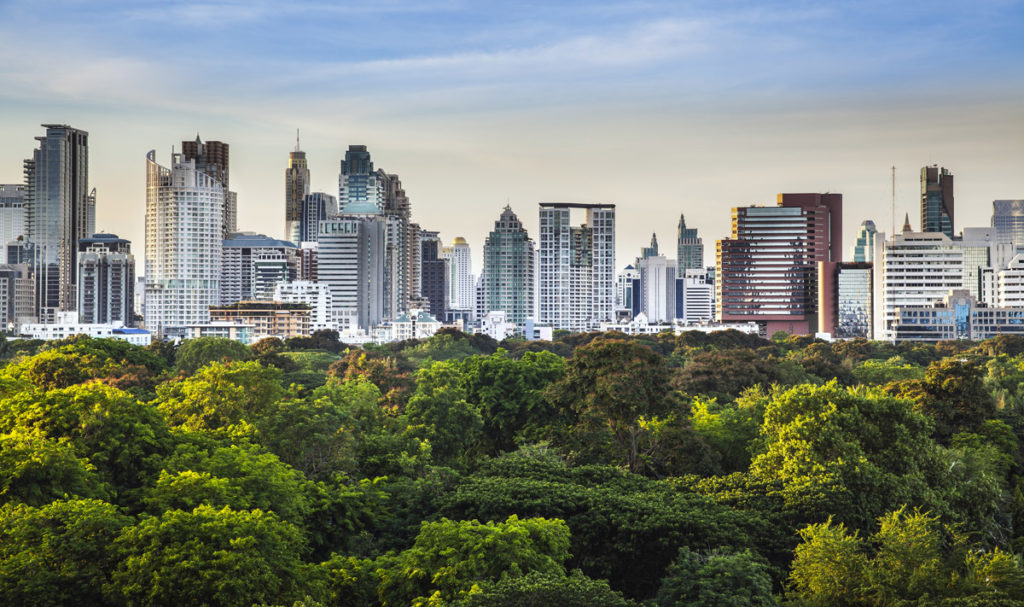As humans, we continually shape our local environments. Buildings have become a prominent feature in our landscapes, and over the years their environmental and social impacts have been questioned. The first wave of green building was in response to energy demands and resource efficiency, but now a holistic view of sustainable construction has arisen. Worldwide, there is a push for business sustainability among businesses and building projects that follow the triple bottom line – planet, people and profit.
Green buildings look at long-term economic and environmental performance, appreciate local communities and the natural environment, and provide health, safety and productivity for occupants. According to the 2016 SmartMarket Report, global green building continues to double every three years and its popularity is growing steadily. Below are the reasons why green buildings are worth the investment:
- Demand For Sustainability
Environmental awareness has grown worldwide and people look at green management practices to inform their decision-making. In the World Green Building Trend report, 40% of respondents said that client demands were the driver for their green building activity. Consumers, employees and tenants not only look at sustainability in businesses, but also the sustainability of the buildings themselves.
- Reduce Carbon Footprint
The issue of climate change remains a challenge for business and building owners, who feel the pressure to address their carbon emissions and energy efficiencies. The Schneider Electric report notes that in most countries, buildings account for up to 40% of energy use. Having more high-performance green buildings can help businesses generate their own energy needs, with the potential of storing energy back into the grid. Energy efficiency strategies can also mitigate risks associated with rising energy prices and supply security.
- Save Money
Green buildings save money with reduced energy and water use, and in the long term, operations and maintenance costs are lowered. The World Green Building Council report looks at Cape Town’s V&A Waterfront 2008 green retrofit, highlighting that their energy costs dropped 17%, and annual savings for water conservation and waste management amounted to US$62,000 and US$100,000, respectively. Closer to home, the McGraw Hill study shows that the Canadian businesses surveyed had reasonable payback periods of 8 years for new green building projects, and 7 years for green retrofits and renovations.
- Business Transparency
Having transparency with your green business practices can ensure corporate responsibility. Which, in turn, builds trust among consumers and employees and boosts your public image. Fairmont Hotels and Resorts are committed to their sustainability partnership program that focuses on accountability, reducing environmental impacts, and design and construction. They provide information on their websites, brochures, and in-room sustainability guides to inform their guests of their environmental policies.
- Increased Well-Being Of Employees
Thoughtful, sustainable design can also boost employee satisfaction and productivity. The Genzyme Center in Cambridge, MA was designed with employees in mind. Their office windows give employees outdoors views, an abundance of natural light, and the ability to control workspace temperature and light levels. After its grand opening, Genzyme surveyed employees and found that 72% felt more alert and productive, 88% said that having outdoor views and access to interior gardens improved their sense of well-being, and 92% had an increased sense of pride about Genzyme’s commitment to the environment.
- Increased Marketability
Greener buildings result in increased market value and long term resilience. The Schneider Electric report showcases the UK’s Hollywood House as a prime example on how green retrofitting can increase the marketability of a building. These initiatives resulted in a “green lease”, which encouraged both the landlord and tenants to upkeep environmental practices and management for the building. From this retrofit, PRUPIM was able to secure Skanska as a lease tenant and make the building more attractive to future tenants. In this case, it pays to be green.
How To Make the Switch
There are organizations around the world helping businesses become more sustainable and improve their green building standards. For example, ecobase Certified helps businesses generate an eco-fund to invest in projects to reduce their operational costs, track and measure their carbon footprint and calculate potential return on investment (ROI). In addition, green business and building owners can look at third-party auditors to get certified for going green: LEED is an internationally recognized rating system for green building design. And within the tourism industry, Sustainable Tourism 2030 helps businesses create a sustainability action plan to become certified after assessment.
Initial investments in a green building can seem overwhelming at first, but costs can be offset through financial assistance programs geared towards sustainable development or by generating an eco-fund, as mentioned above.
Overall, investing in a green building follows the triple bottom line by helping protect the planet (through energy, water and waste management initiatives), addressing the well-being of the people who work in these buildings, and by helping businesses become both sustainable and profitable. By going the greener route, buildings and businesses don’t have to compromise functionality, productivity, comfort or the environment.

